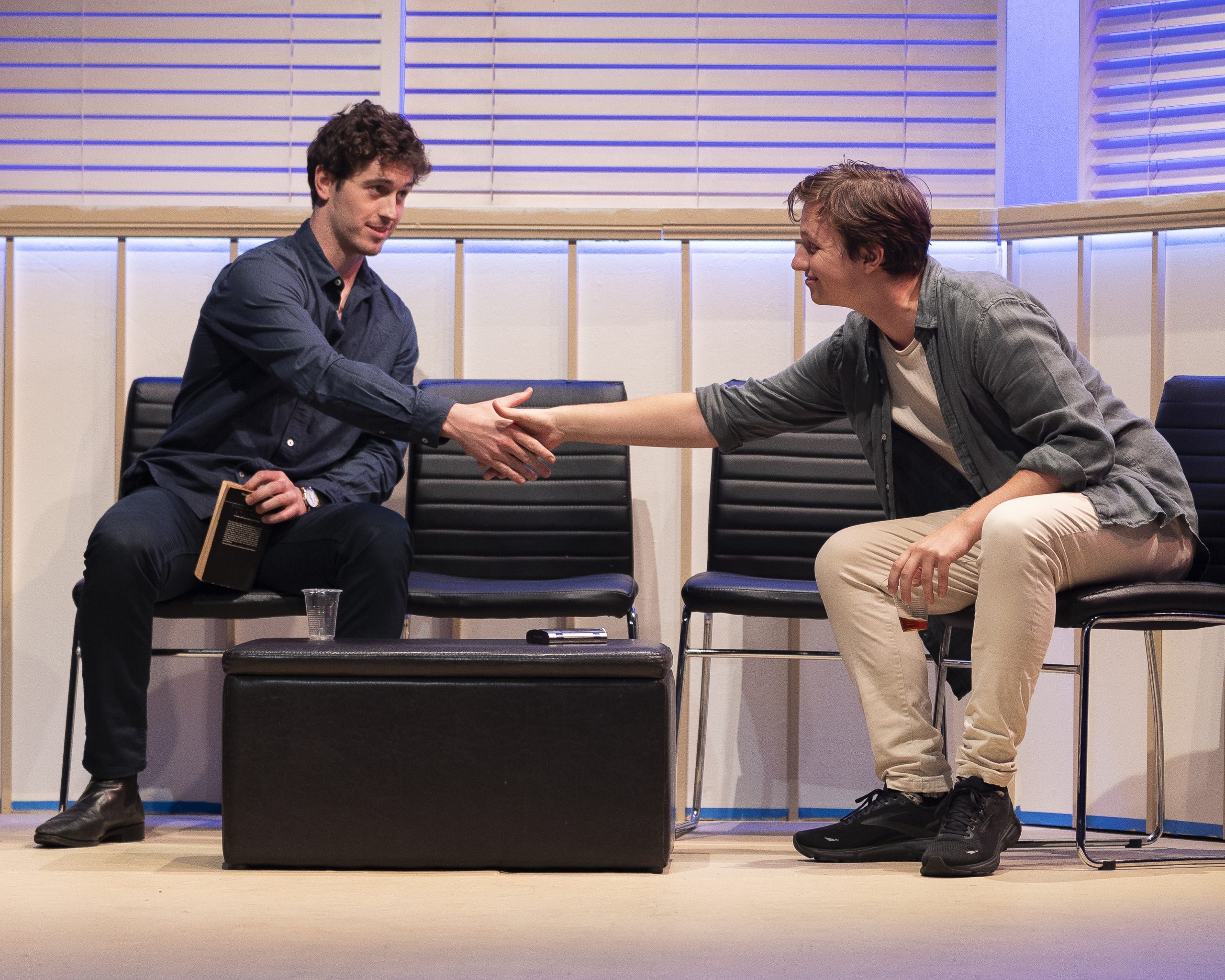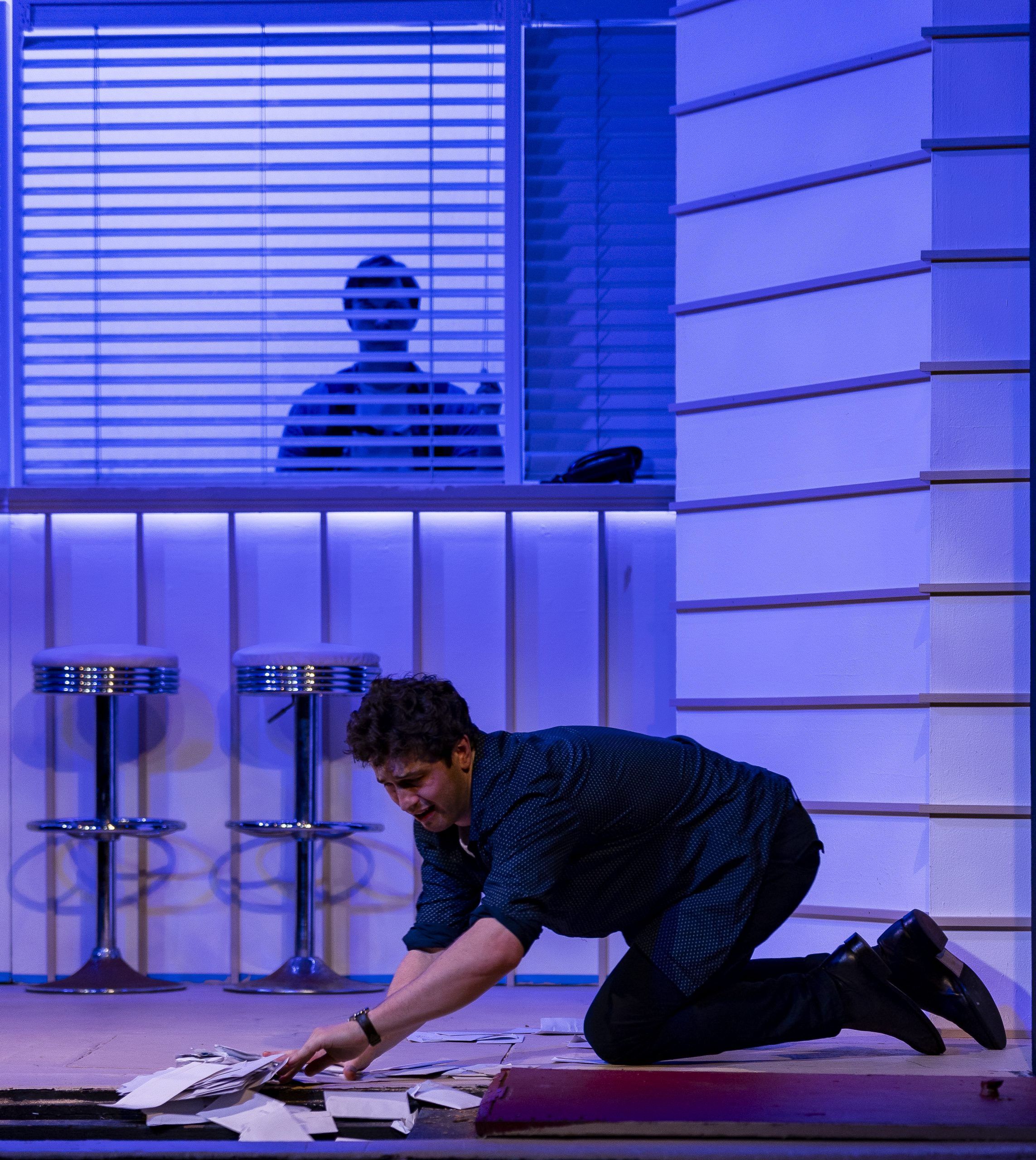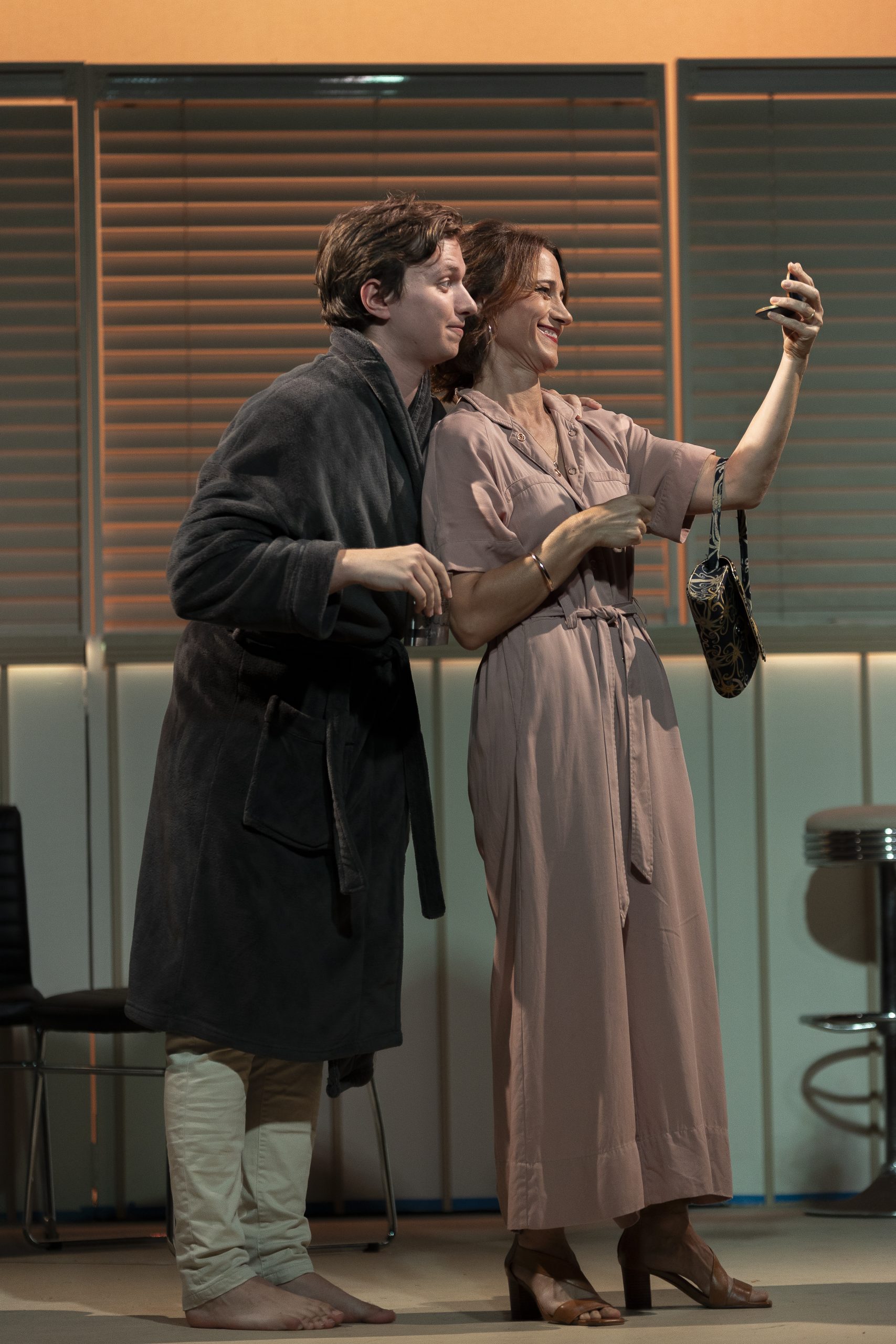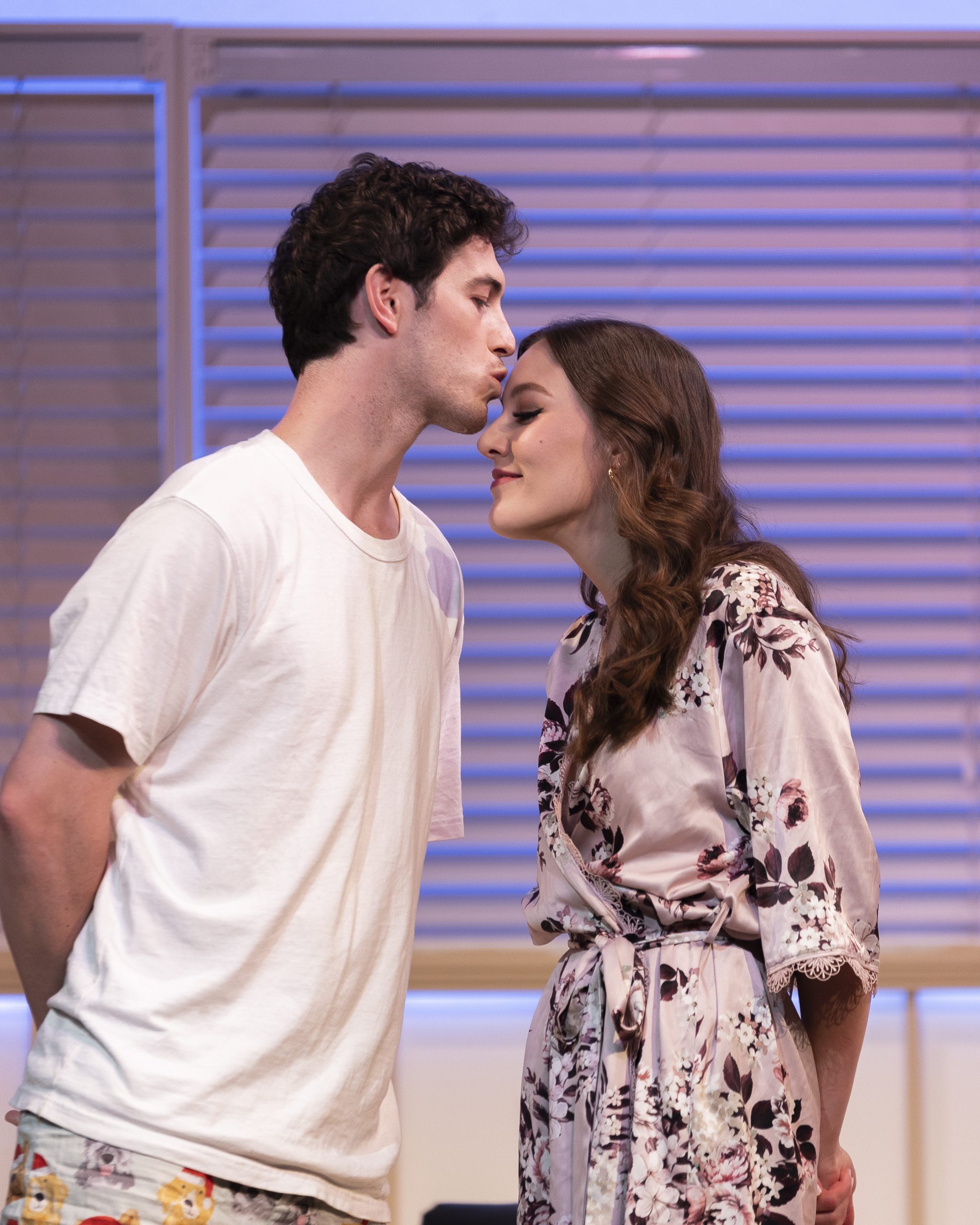Adapted by Craig Warner from the novel by Patricia Highsmith. Genesian Theatre Company, Sydney. March 16 – April 20, 2024.
Reviewed : 24 March, 2024

Mark G Nagle always chooses plays that challenge – and he meets the challenges they present with excellent insight and preparation and a team of creatives and actors who ‘see’ his vision clearly. His production of Strangers on a Train is a fine example of the sort of theatre that emerges from creative collaboration based on detailed research, analysis and planning. Even his program notes, meticulous and informative, suggest that this production, whilst of a specific genre, might be a little bit different.
Strangers on a Train is Nagle’s “first foray” into crime and suspense. Based on Patricia Highsmith’s 1950 novel, this 2013 adaptation by Craig Warner captures Highsmith’s clever plot with what Nagle describes as “a streamlined narrative” a feature that is intrinsic to Nagle vision. His cast – and his sound and lighting operators – work at a fast pace that is sustained through a series of intertwining scenes.

The action takes place on a sleek, white stage designed by Gregory George. Vertical and horizontal lines suggest uniformity and order. Black and white furniture reinforces a sort of starkness. As do the costumes – definitive colours and clean lines that contrast with anything that might appear creased or conflicting.
Contrasts are inherent in this play, based as it is on two dissimilar men who meet on a train – as dissimilar to the two horses pulling the chariot in Plato’s Phaedrus, which one of the men, Guy Haines is reading. The charioteer is the intellect: the horse on the right (Haines) is rational and moral; that on the left (Charles Bruno) is wild and irrational.

Haines is a quietly confident architect, who is concerned about his wife’s infidelity and the implications of a divorce. Bruno, an alcoholic ‘mummy’s boy’ who has been cut off by his wealthy father is bitter and vindictive. Bruno suggests a perfect solution would be for each to murder the other’s ‘problem’. Bruno tries to pull Haines into his plan; Haines fights against him. But Bruno is relentless. He brazenly carries out his side of the bargain – and hounds Haines continuously to reciprocate …
Nagle’s direction is exacting, the tempo and tension that he develops is accentuated by Michael Schell’s chilling sound effects and lighting effects that offset George’s stark set.
Roy Wallace-Cant plays the vengeful Charles Bruno. He makes this character affable and relaxed but increasingly over-bearing, intrusive, insensitive and manipulative. Bruno is not a likable character and Wallace-Cant shows this in sneering expressions, eyes that appear crazed and drink-affected unsteadiness and volatility.
Haines, conversely, is racked by fear and guilt and Hamish MacDonald shows this in a performance that takes Haines from confidence and aspiration to nervous watchfulness, worn down by soul-searching and guilt, despite the support and concern of his new wife, Anne, played by Rachele Edson.

Jane Wallace Plays Bruno’s doting mother Elsa, Christopher Gerard the private detective who suspects Bruno of foul play. Krishae Senthuran is Haines partner Frank Myers and Chris Bocchi plays Roberta Treacher and Miriam Haines.
The play centres around Bruno and Haines – the increasing pace and the growing tension of the production are dependent upon the authenticity and strength of their characters. Both Wallace-Cant and MacDonald find both in a production that is taut and edgy … based on direction that is precise and exacting.
Nagle is a thoughtful charioteer who holds the reins firmly. His two ‘horses’, unlike Plato’s, have both been “good” and “noble” following his directions with trust and conviction, and bringing a very clever production to the GenesiaTheatre.